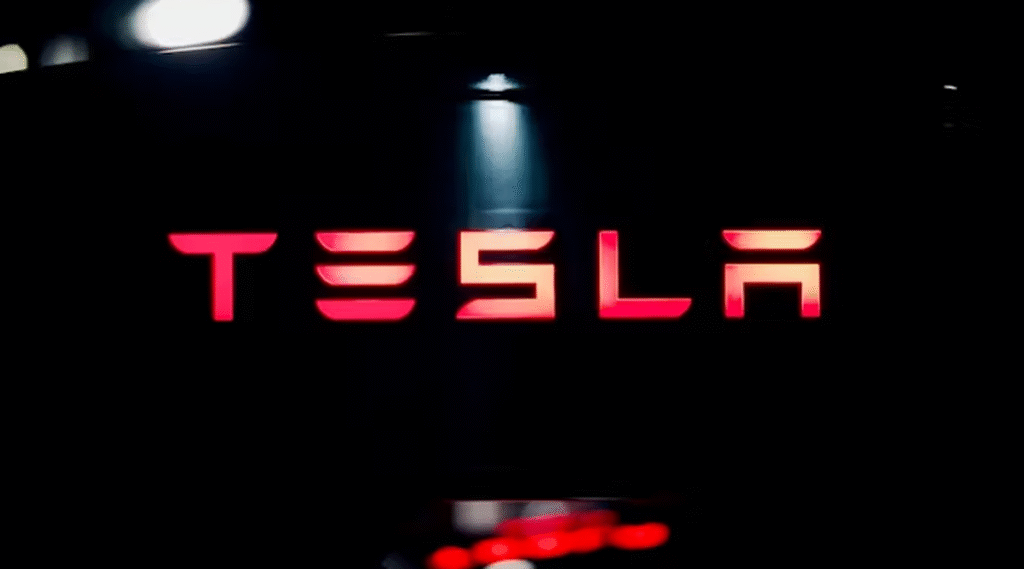Tesla’s self-driving technology has captured widespread attention, stirring conversations in boardrooms, on the roads, and across social media. As the company advances its Autopilot and Full Self-Driving (FSD) features, questions about the reliability and safety of these systems loom large. Can Tesla’s self-driving technology be trusted to navigate unpredictable real-world conditions? In this article, we delve into the nuances of Tesla’s self-driving technology, examining its technical foundations, safety records, regulatory scrutiny, and overall performance to assess whether the technology is reliable enough to redefine modern transportation.
1. Understanding Tesla’s Self-Driving Technology
1.1 The Evolution of Tesla Autopilot and FSD
Tesla’s journey toward autonomous driving began with its Autopilot system, introduced as an advanced driver assistance feature. Autopilot incorporated adaptive cruise control, lane-keeping assistance, and automated lane changes. Over the years, Tesla has continuously upgraded its hardware and software, adding capabilities that edge closer to full autonomy.
Today, Tesla markets its FSD package as a suite of features that includes traffic-aware cruise control, automatic lane changes, Summon (where the car moves to the owner’s location), and Navigate on Autopilot, which guides the vehicle from on-ramp to off-ramp on highways. Although Tesla refers to its systems as “self-driving,” current iterations still require active driver supervision—a point of frequent clarification by the company and regulatory agencies.
1.2 Hardware and Sensor Suite
Tesla relies primarily on a vision-based system for its autonomous features, eschewing the use of LiDAR. Instead, the company uses a combination of eight cameras, radar (though recent models have started moving away from radar in favor of pure vision), and ultrasonic sensors. The decision to rely on a camera-centric approach has been both praised and criticized. Proponents argue that advanced neural networks can interpret visual data much like human drivers, while critics contend that the absence of LiDAR and other sensor redundancies could leave gaps in the system’s perception capabilities during adverse conditions like heavy rain or fog.
Tesla’s custom-designed onboard computer, often dubbed the “FSD computer” or “Hardware 3,” is engineered to process large volumes of video data in real time and run complex machine learning algorithms crucial for autonomous decision-making. This specialized hardware is paired with continuous software updates delivered over-the-air, which Tesla claims improves performance and adds new features over time.
2. Assessing Reliability in Autonomous Systems
2.1 Defining Reliability for Self-Driving Technology
Reliability in the context of self-driving technology encompasses several key aspects:
- Safety: The ability of the system to prevent accidents and handle emergency situations.
- Consistency: Performance stability across diverse environmental conditions (e.g., weather, road types, traffic density).
- Redundancy: The presence of backup systems that ensure continued operation even if one component fails.
- User Trust: Public confidence in the technology, shaped by transparency in data reporting, successful real-world performance, and regulatory endorsement.
For Tesla’s self-driving technology to be deemed reliable, it must excel across these dimensions, consistently delivering safe and effective autonomous performance under a broad range of conditions.
2.2 Evaluating Safety Records and Accident Data
Safety remains the most scrutinized aspect of any autonomous system. Tesla reports that vehicles using its Autopilot have lower accident rates compared to those driven manually. Internal data, often shared in annual safety reports, indicates that incidents per million miles when Autopilot is engaged are significantly lower than those during manual driving. However, independent studies and regulatory investigations have raised questions about how safety metrics are calculated and whether these numbers fully capture the potential risks in complex, unpredictable environments.
Critics argue that Tesla’s aggressive marketing of its “Full Self-Driving” capabilities can create misconceptions about the system’s actual autonomy level. High-profile accidents—where misuse or overreliance on the autonomous features has been implicated—undermine public confidence and highlight areas where the system may fall short. While Tesla’s continuous software updates aim to mitigate these issues by refining the algorithms and enhancing sensor processing, debates persist on whether these incremental improvements are sufficient to guarantee comprehensive safety.
2.3 Consistency Across Environmental Conditions
One of the hallmarks of a reliable autonomous system is its ability to perform consistently, irrespective of external conditions. Tesla’s vision-based approach, relying heavily on cameras, has demonstrated impressive capabilities in clear weather conditions. However, adverse weather scenarios—such as heavy rain, fog, snow, or glare—can challenge the sensor suite’s ability to accurately detect road markings and obstacles.
Tesla has been working on improving weather resilience through software enhancements that help the system interpret visual data under challenging circumstances. Yet, incidents where Autopilot struggled in heavy precipitation or when roads were poorly marked underscore the need for multi-sensor redundancy. Comparatively, other automakers and technology companies that combine LiDAR and radar with camera inputs might offer a more robust perception of the environment, though at increased cost.
2.4 Redundancy and Fail-Safe Mechanisms
Tesla’s approach to redundancy is built into its software architecture and hardware design. The company has implemented multiple layers of fail-safe mechanisms, such as backup systems for critical functions and routines that allow drivers to override Autopilot at any time. Nevertheless, the absence of additional redundant sensors like LiDAR remains a point of contention among industry experts.
The current system is designed to alert drivers if it encounters uncertainties or limitations. For example, if the vehicle’s sensors cannot confidently identify an object or environmental condition, the system prompts the driver to take over. This requirement for ongoing driver supervision is both a safety feature and an indication of the system’s current limitations. The gradual transition toward full autonomy will likely necessitate the incorporation of further redundancies to ensure that all critical functions are safeguarded against sensor failures or unexpected conditions.
3. Reliability Challenges and Opportunities for Improvement
3.1 Technological Evolution and Software Updates
Tesla’s rapid pace of software updates is one of its distinguishing features. The over-the-air (OTA) update model allows Tesla to deploy improvements, add features, and fix bugs in the self-driving software quickly. This continuous evolution means that the reliability of the system can improve over time as new data and feedback are incorporated into the algorithms.
However, the same rapid update cycle can also create challenges in consistency. Different vehicles may be running on varying versions of the software, which might lead to performance discrepancies. Moreover, the transition between versions can sometimes introduce unforeseen issues that impact reliability. Balancing the drive for continuous improvement with the need for stability is an ongoing challenge for Tesla.
3.2 User Experience and Driver Compliance
A reliable self-driving system is only as effective as its users allow it to be. Tesla’s approach requires drivers to remain attentive and ready to take control at any moment. However, there have been instances where drivers have misused the technology—relying too heavily on automation or engaging with distractions—which can compromise safety. Building public trust in the technology involves not only improving the system’s technical reliability but also educating consumers on proper usage.
Enhanced training programs, clearer user interfaces, and improved alert systems are being explored to ensure that drivers maintain the necessary level of engagement. Ultimately, a more intuitive system that instills confidence without encouraging complacency will contribute significantly to overall reliability.
3.3 Regulatory and Ethical Considerations
The reliability of autonomous driving technology is also influenced by the regulatory and ethical landscape. Governments around the world are scrutinizing self-driving systems, setting safety standards, and, in some cases, imposing restrictions on testing and deployment. For Tesla, clear regulatory guidelines are essential to ensure that the technology can evolve safely and that safety metrics are measured transparently. This regulatory oversight is vital not only for public safety but also for building long-term consumer trust.
Ethical considerations also play a significant role. When AI algorithms are responsible for life-critical decisions, transparency is critical. Tesla faces the challenge of explaining how its software makes decisions in unpredictable scenarios. Transparency in testing data, accident investigations, and software updates can help build public understanding and trust.
4. Real-World Insights: How Tesla’s Self-Driving Technology Is Used Today
4.1 Pilot Programs and Controlled Deployments
Tesla has been at the forefront of deploying self-driving features on public roads, albeit with continuous human oversight. In pilot programs across select regions, self-driving features have been tested extensively, with safety drivers ready to intervene at any time. These pilot programs offer valuable insights into the system’s performance under real-world conditions, enabling iterative improvements based on practical data.
Several cities have participated in trials where Tesla vehicles operate on highways and in urban settings, providing a wealth of operational data. While these tests have not yet reached full autonomy, they have revealed both the capabilities and the limitations of the current systems.
4.2 Consumer Feedback and Market Reception
Public reception to Tesla’s autonomous features has been mixed. Many consumers appreciate the convenience and the potential for improved road safety. However, high-profile incidents and media scrutiny have raised concerns about the technology’s current limitations. Despite this, many Tesla owners report that their vehicles perform effectively under typical conditions, handling highway driving, traffic jams, and even complex merging scenarios with a high degree of competence.
Consumer feedback has been instrumental in driving continuous improvements. As drivers share their experiences and report anomalies, Tesla’s software teams have been able to fine-tune algorithms and adjust sensor processing techniques to address shortcomings and enhance overall performance.
5. The Path to Greater Trust and Full Autonomy
5.1 Increasing Redundancy and Sensor Fusion
To achieve true reliability, autonomous systems will need to incorporate even greater redundancy. Many experts advocate for a multi-sensor approach that includes LiDAR, radar, and cameras. While Tesla has committed to its vision-based system, future iterations may incorporate additional redundant systems to address vulnerabilities in harsh conditions or in complex driving scenarios. This sensor fusion approach could provide a more robust perception of the environment, enhancing reliability and safety.
5.2 Advancements in AI and Machine Learning
Ongoing advancements in AI technology promise to enhance the decision-making capabilities of self-driving systems. With more sophisticated algorithms capable of processing vast amounts of data in real time, the system can better predict and react to unexpected changes in its environment. Continuous improvements in machine learning models—driven by extensive data collected from millions of miles of real-world driving—will refine the reliability of autonomous operations over time.
5.3 Strengthening Cybersecurity Measures
As Tesla’s self-driving systems become more interconnected, ensuring cybersecurity will be paramount. Robust, multi-layered security protocols must protect critical systems from potential cyberattacks. The future of autonomous driving technology will depend on not just technical prowess in navigating physical roads, but also on maintaining the integrity and security of the digital systems that control these vehicles.
5.4 Evolving Regulatory Frameworks
A critical factor in building public trust is the evolution of regulatory frameworks governing autonomous vehicles. As Tesla and its competitors advance their self-driving technologies, collaboration with regulators will be essential to define clear, enforceable safety standards. Transparent testing procedures, standardized performance metrics, and rigorous oversight will ensure that autonomous vehicles meet the high standards required for public deployment. This regulatory clarity will help bridge the gap between innovation and consumer confidence.
Transforming Transportation Safety and Efficiency
Determining whether Tesla’s self-driving technology is reliable involves weighing its technological achievements against the challenges that remain. On one hand, the advanced sensor systems, machine learning algorithms, and over-the-air updates enable Tesla vehicles to navigate highways, manage complex driving scenarios, and potentially reduce accidents caused by human error. On the other, issues related to sensor limitations, public misinterpretation of “self-driving” capabilities, cybersecurity risks, and regulatory uncertainty continue to pose challenges.
The current state of Tesla’s autonomous technology reflects a period of evolution rather than maturity. While Tesla’s systems have demonstrated significant promise in controlled environments and selective on-road deployments, achieving full trustworthiness requires ongoing improvements in redundancy, AI sophistication, and regulatory alignment. As Tesla continues to refine its technology and incorporate feedback from real-world testing, the gap between promise and performance will likely continue to narrow.
For the public to fully embrace autonomous driving, a combination of technological innovation, transparent data reporting, and clear regulatory guidance is essential. Increased sensor fusion, advancements in AI for real-time decision-making, and robust cybersecurity measures will play a crucial role in building the reliability needed to safely integrate self-driving technology into everyday life.
In summary, while Tesla’s self-driving technology is making impressive strides and holds considerable promise for transforming transportation safety and efficiency, it is still a work in progress. The journey toward full reliability is ongoing, and public trust will strengthen as the systems evolve, regulatory bodies provide clearer guidelines, and more data from real-world operations demonstrates that the technology can indeed perform reliably in the complex and unpredictable environment of our roads. With each software update and sensor improvement, Tesla moves closer to the vision of truly safe, autonomous vehicles—and with it, a new era of transportation that benefits society as a whole.
More articles for the topic:
Mastering the Wheel: Why Ordinary Drivers Must Grasp Self-Driving Technology
The Rational Foundations of Self-Driving Technology: A Comprehensive Analysis
Maybe This is Elon Musk’s Profound Vision for the Future of Self-Driving Cars
As for in-depth insight articles about AI tech, please visit our AI Tech Category here.
As for in-depth insight articles about Auto Tech, please visit our Auto Tech Category here.
As for in-depth insight articles about Smart IoT, please visit our Smart IoT Category here.
As for in-depth insight articles about Energy, please visit our Energy Category here.
If you want to save time for high-quality reading, please visit our Editors’ Pick here.



